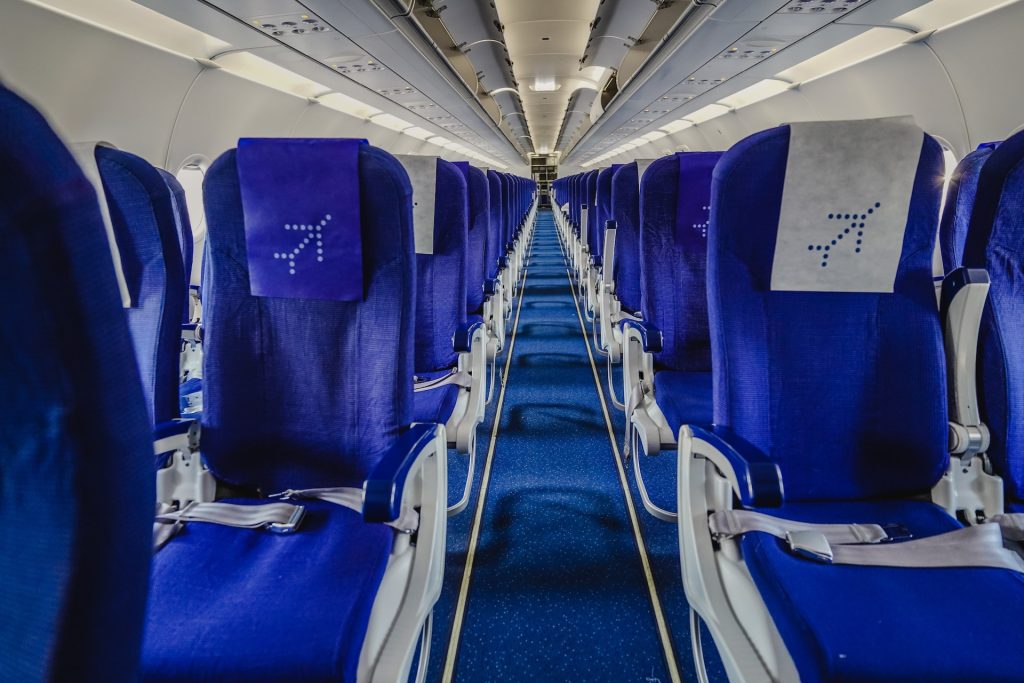For frequent flyers and travelers alike, one of the most common complaints about air travel is the shrinking legroom on airplanes. Over the years, it seems as though the gap between seats has been steadily decreasing, leaving passengers feeling cramped and uncomfortable. But how did we get here? How do airplane legrooms get so tight? In this article, we will explore the factors that contribute to the limited legroom in modern aircraft and the various challenges airlines face in balancing passenger comfort with economic sustainability.
Economics of Air Travel
To understand the reasons behind tight airplane legrooms, it’s crucial to grasp the economic forces at play in the airline industry. Airlines operate in a highly competitive market where profitability often hinges on factors such as ticket prices, fuel costs, and maintenance expenses. In an effort to remain competitive and keep ticket prices reasonable, airlines look for ways to maximize the number of passengers they can accommodate on each flight. This drive to increase capacity is a key factor in the reduction of legroom.
Seat Density and Revenue Generation
One of the primary ways airlines generate revenue is by filling as many seats as possible on each flight. This concept is referred to as seat density, and it plays a significant role in the design of modern aircraft cabins. Airlines aim to strike a balance between accommodating more passengers and maintaining a level of comfort that is acceptable to travelers.
As a result, airlines often install more rows of seats, reduce the pitch (the distance between rows), and narrow the seats themselves. By doing so, they can increase the number of passengers on board without significantly increasing operating costs. This strategy allows airlines to keep ticket prices competitive, but it also leads to tighter legroom for passengers.
Aircraft Design and Configuration
The design and configuration of an aircraft also play a crucial role in determining legroom. Different aircraft models have varying cabin layouts, with some featuring more spacious cabins than others. Airlines select aircraft based on factors like route length, passenger demand, and operational efficiency.
For longer-haul flights, airlines may opt for aircraft models that offer more passenger comfort, including extra legroom. However, on shorter routes or routes with high demand, airlines may choose aircraft with a denser seating configuration, resulting in less legroom for passengers.
The Battle for Extra Inches
Passenger comfort has not been entirely ignored in the airline industry. Some airlines have recognized the value of offering extra legroom as a premium service. This has given rise to seating options like “economy plus” or “premium economy,” where passengers can pay extra for more spacious seats and additional legroom. However, these options are typically available at a higher price point, leaving standard economy passengers with the tightest legroom.
Regulatory Standards
The Federal Aviation Administration (FAA) and other aviation regulatory bodies around the world establish minimum safety standards for cabin layouts and seat designs. These regulations are primarily focused on ensuring passenger safety during takeoff, landing, and emergency evacuations.
While these regulations address safety concerns, they do not specify minimum requirements for passenger comfort or legroom. This lack of regulatory oversight allows airlines to make their own decisions regarding cabin configurations and legroom, which often leads to the tightest possible arrangements that remain within safety guidelines.
Passenger Behavior and Expectations
Another factor contributing to tight airplane legroom is passenger behavior and expectations. As travelers, we often prioritize factors such as ticket price, departure time, and destination over seat comfort. Airlines have taken note of this and have adjusted their business models accordingly. Passengers are generally willing to sacrifice some comfort for the sake of lower fares, making it financially advantageous for airlines to reduce legroom.
Additionally, passengers’ preferences for certain amenities, such as in-flight entertainment, Wi-Fi, and power outlets, have shifted the focus away from seat comfort. Airlines invest in these features to attract passengers and remain competitive, sometimes at the expense of legroom.
Technological Advancements
Advancements in technology have influenced aircraft design and the available space for passengers. For example, the introduction of thinner and more lightweight materials has allowed airlines to reduce the bulk of seats and other components, creating more space within the cabin. However, instead of using this newfound space to increase legroom, airlines have often opted to add more seats to maximize revenue.
The Future of Air Travel
As the aviation industry continues to evolve, the future of airplane legroom remains uncertain. While some airlines are exploring innovative seating designs and configurations, others are likely to continue the trend of maximizing seat density to remain competitive.
Passengers can also take steps to mitigate the discomfort of tight legroom, such as choosing airlines that offer premium seating options, booking flights during off-peak times, or investing in travel accessories like inflatable footrests and compression socks.
The tight legroom experienced by passengers on modern airplanes is the result of complex economic, design, and regulatory factors that shape the airline industry. Airlines face constant pressure to increase revenue while keeping ticket prices competitive, leading them to adopt denser seating configurations and reduce legroom. While passengers may find themselves in cramped conditions, understanding the economics of air travel and considering alternative seating options can help improve the flying experience. Ultimately, the balance between passenger comfort and economic sustainability will continue to be a challenge for the airline industry in the years to come.
Innovations in Cabin Design
As passengers increasingly demand more comfortable and spacious seating, some airlines are beginning to experiment with innovative cabin designs to address the issue of tight legroom. These developments are driven by the recognition that passenger comfort is a significant factor in choosing an airline and can influence travelers’ decisions.
New Seating Configurations: Airlines are exploring alternative seating configurations that can maximize cabin space without compromising passenger comfort. This includes staggered seating arrangements, where seats are positioned in a zigzag pattern to provide more privacy and legroom, as well as innovative designs like adjustable seats that can recline without encroaching on the space of the passenger behind.
Redesigning Cabin Layouts: Some airlines are reimagining the entire cabin layout to create more spacious and comfortable areas for passengers. This might involve fewer seats in the cabin, redesigned galleys, and larger restrooms, all of which can contribute to a more comfortable flying experience.
Premium Economy and Beyond: The trend toward premium economy cabins continues to grow, offering passengers more space and enhanced amenities without the cost of business or first-class tickets. Airlines are investing in these premium offerings as a way to attract travelers who are willing to pay a bit more for added comfort.
Passenger Activism
Passenger dissatisfaction with tight legroom has not gone unnoticed. In recent years, there has been increased activism and advocacy for improved passenger rights and comfort. Some passengers have taken legal action against airlines, arguing that cramped seating poses health risks and violates their rights as paying customers.
Consumer advocacy groups and organizations have also pushed for stricter regulations regarding seat size and legroom. While significant changes have yet to occur, these efforts have placed pressure on both airlines and regulatory bodies to address the issue of inadequate legroom.
Balancing Act for Airlines
The challenge of providing sufficient legroom while maintaining economic viability remains a delicate balancing act for airlines. They must navigate the competing demands of passengers seeking comfort and affordability, all while managing operational costs and staying competitive in a crowded market.
Airlines often rely on sophisticated algorithms and data analysis to determine the optimal cabin configurations that maximize revenue while minimizing passenger discomfort. This means that decisions about legroom are not solely driven by cost-cutting but are influenced by complex calculations aimed at optimizing profitability.
Passenger Choices and Trade-offs
Ultimately, the choice of an airline and the quality of legroom during a flight often come down to individual passenger preferences and priorities. Passengers who prioritize comfort above all else may be willing to pay extra for premium seating options, while others may opt for budget carriers with tighter legroom to save on ticket prices.
Travelers can take several steps to mitigate the discomfort of tight legroom, including:
Booking Early: Booking flights well in advance can often provide access to better seating options, including seats with more legroom.
Seat Selection: Many airlines allow passengers to choose their seats during the booking process. Selecting seats with extra legroom, such as exit row seats or bulkhead seats, can provide a more comfortable experience.
Travel Accessories: Consider investing in travel accessories like inflatable footrests, neck pillows, and compression socks to improve comfort during the flight.
Flexible Travel Times: Choosing flights during off-peak times may result in a less crowded cabin and more space to stretch your legs.
The issue of tight legroom on airplanes is a multifaceted one, influenced by economic pressures, cabin design choices, and passenger expectations. While airlines continue to explore innovative solutions to provide more comfortable flying experiences, passengers also have a role to play in making informed choices that prioritize their own comfort.
As the aviation industry evolves, it remains to be seen whether passenger comfort will become a more prominent consideration in cabin design and seat configurations. In the meantime, understanding the factors that contribute to tight legroom and taking proactive measures to enhance your own comfort can help make air travel a more enjoyable experience. Balancing the economics of air travel with passenger comfort is a complex challenge, and the industry will likely continue to adapt and innovate in response to evolving passenger expectations and demands.
Potential Future Developments
While the airline industry faces various challenges in addressing the issue of tight legroom, there are some potential future developments that could lead to improvements in passenger comfort:
New Aircraft Designs: Aircraft manufacturers are constantly working on developing more efficient and passenger-friendly airplane designs. Future aircraft may feature more spacious cabins, innovative seating arrangements, and improved in-flight amenities.
Technological Advancements: Advancements in materials and technology may lead to more comfortable seating options. This could include seats with adjustable configurations, better lumbar support, and improved recline mechanisms that don’t infringe on the space of the passenger behind.
Regulatory Changes: As passenger activism and awareness grow, regulatory bodies may revisit seat size and legroom standards to ensure passenger safety and comfort. Stricter regulations or guidelines regarding minimum seat dimensions could be implemented.
Passenger Education: As travelers become more informed about the various seating options available, they may be more inclined to choose airlines that prioritize passenger comfort. Increased demand for more spacious seating could incentivize airlines to invest in such options.
Airlines Differentiating Themselves: Airlines may continue to differentiate themselves by offering unique and attractive features to passengers. Some may prioritize providing more legroom as a selling point, especially for longer flights, while others focus on value-added services.
The issue of tight airplane legroom is a persistent concern for air travelers, but it is a complex problem with no one-size-fits-all solution. The tension between airlines’ economic imperatives and passengers’ desire for comfort continues to shape the flying experience.
While airlines have made efforts to provide premium seating options with more legroom, the majority of passengers still find themselves in standard economy seats with limited space. Passengers can take proactive steps to improve their in-flight comfort, but the ultimate responsibility for addressing this issue lies with the airline industry, regulators, and manufacturers.
The future of airplane legroom will depend on a combination of passenger demand, regulatory changes, technological innovations, and the strategies adopted by airlines to remain competitive in an evolving market. As travelers become more vocal about their expectations for comfort and airlines seek to differentiate themselves, there is hope for positive changes that will make flying a more pleasant experience for all. Until then, passengers should stay informed, plan ahead, and advocate for their own comfort whenever possible, even as they navigate the challenges of tight airplane legroom in the sky.







